We have two varieties planted on the homestead: Sweet Scarlet and Red Gem. The former has larger, plump, sweet tasting fruit while the later has smaller, more tart berries. Red Gem is planted near our birdbath and we are fine with those guys harvesting the berries. The Sweet Scarlet is planted further away and seems to get missed by the birds, leaving tons of sweet fruit for us.
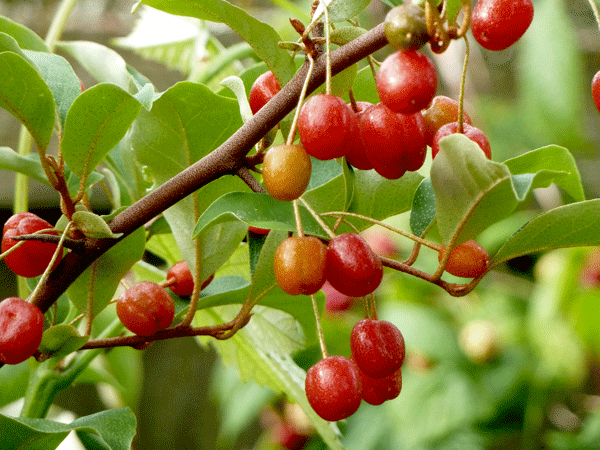 Harvest time is in June for goumi shrubs and the branches on our plants were bent over from the weight of fruit. With Juniper supervising, I harvested about fifteen pounds of berries from our Sweet Scarlet shrub. As the weight of berries was lifted, the branches began to spring back upward. That showed off the lovely grey underside of the leaves.
Harvest time is in June for goumi shrubs and the branches on our plants were bent over from the weight of fruit. With Juniper supervising, I harvested about fifteen pounds of berries from our Sweet Scarlet shrub. As the weight of berries was lifted, the branches began to spring back upward. That showed off the lovely grey underside of the leaves.
 What to do with fifteen pounds of goumi berries? The fruit is said to be low in acid, which makes me nervous about canning it. Instead, I decided to juice the berries and preserve them in the freezer. That way I don’t have to worry about acidity level – just flavor. Here was my process:
What to do with fifteen pounds of goumi berries? The fruit is said to be low in acid, which makes me nervous about canning it. Instead, I decided to juice the berries and preserve them in the freezer. That way I don’t have to worry about acidity level – just flavor. Here was my process:
- Rinse the berries. Don’t worry about separating the thin stems from the fruit.
- Simmer three parts goumi berries with one part strawberry, raspberry or other sweet berry. This gave my mixture a lift in flavor without masking the goumi taste too much. For every two cups of berries, add one cup of water.
- Meanwhile, in a separate pot make a simply syrup by combining one cup water with one cup sugar. Bring to a boil and simmer for 10-15 minutes. Set aside.
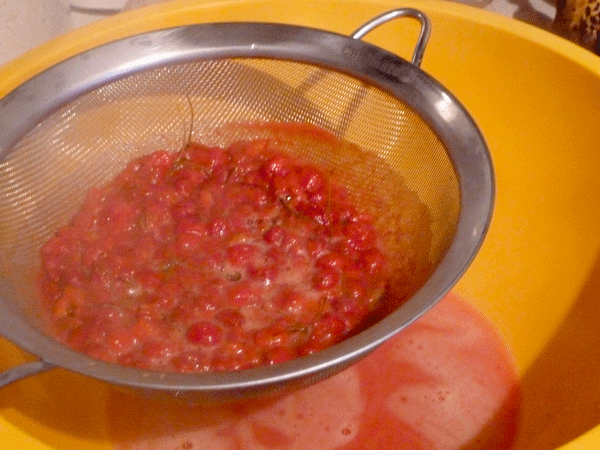 Strain berries through a sieve, cheesecloth or a food mill. This separates the juice and pulp from the stems and large fibrous seeds. Compost the stems and seeds.
Strain berries through a sieve, cheesecloth or a food mill. This separates the juice and pulp from the stems and large fibrous seeds. Compost the stems and seeds.- Combine simple syrup with berry juice. I used three parts juice to one part syrup, but do this slowly and keep tasting until it is sweet enough for your preference.
- Pour goumi syrup into freezer containers, label and tuck away.
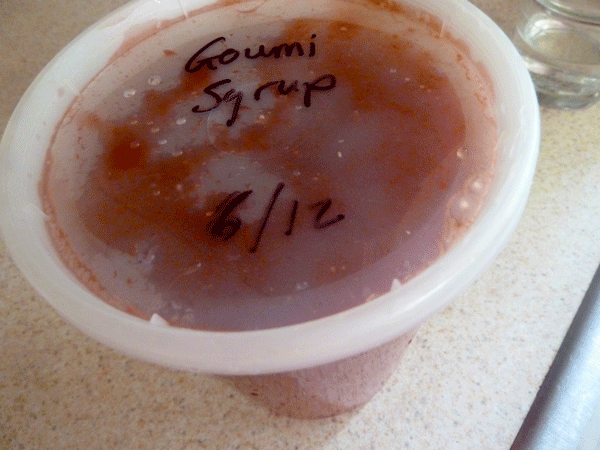 Preserving goumis as a syrup leaves the door open for versatility later. When I want a pancake or waffle topping, I will simmer some syrup with cornstarch until it’s thickened. I can add a goumi syrup to iced tea or mix with club soda for a cool summer drink. It can also be drizzled onto baked goods as desired.
Preserving goumis as a syrup leaves the door open for versatility later. When I want a pancake or waffle topping, I will simmer some syrup with cornstarch until it’s thickened. I can add a goumi syrup to iced tea or mix with club soda for a cool summer drink. It can also be drizzled onto baked goods as desired.
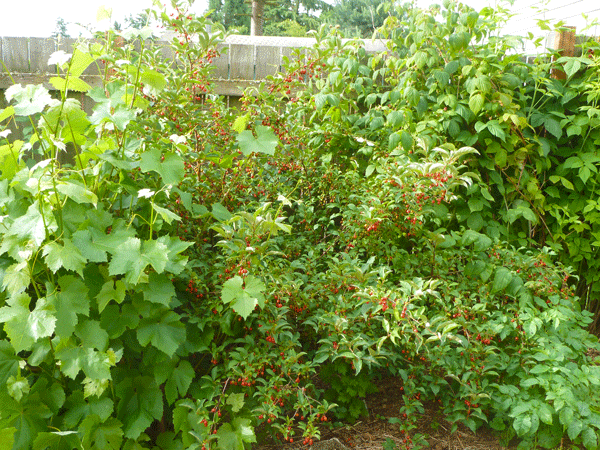
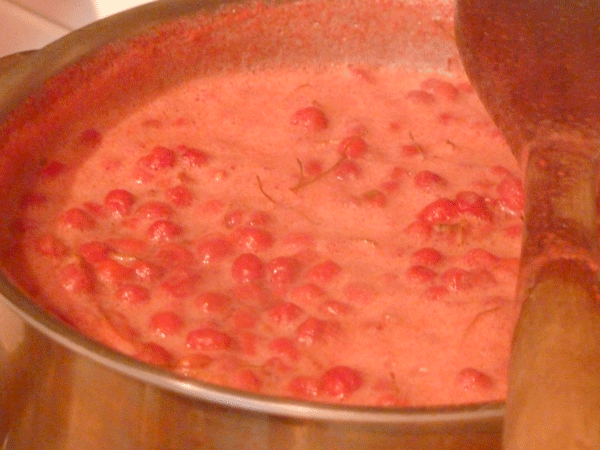
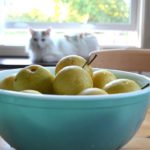
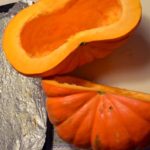
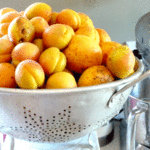
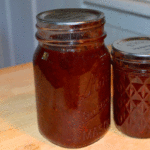

 I start with a
I start with a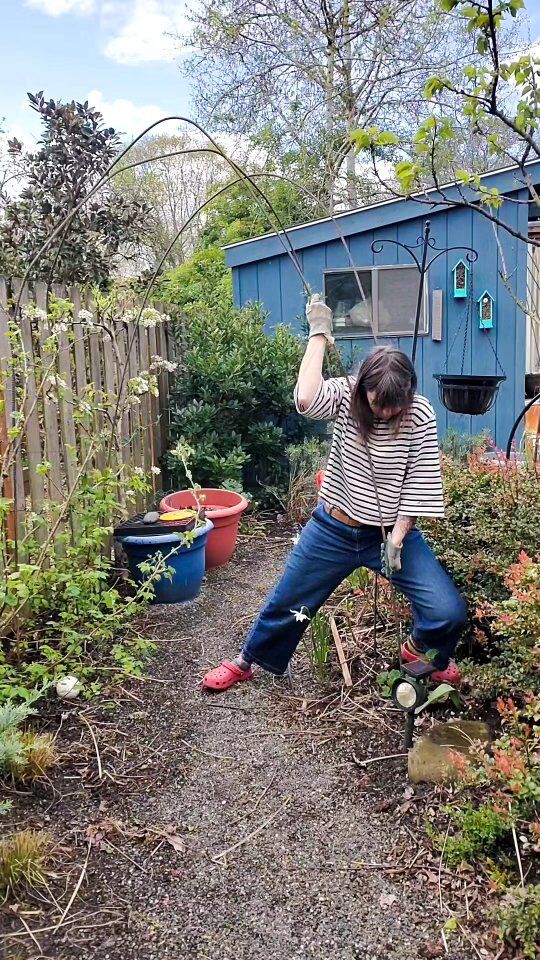

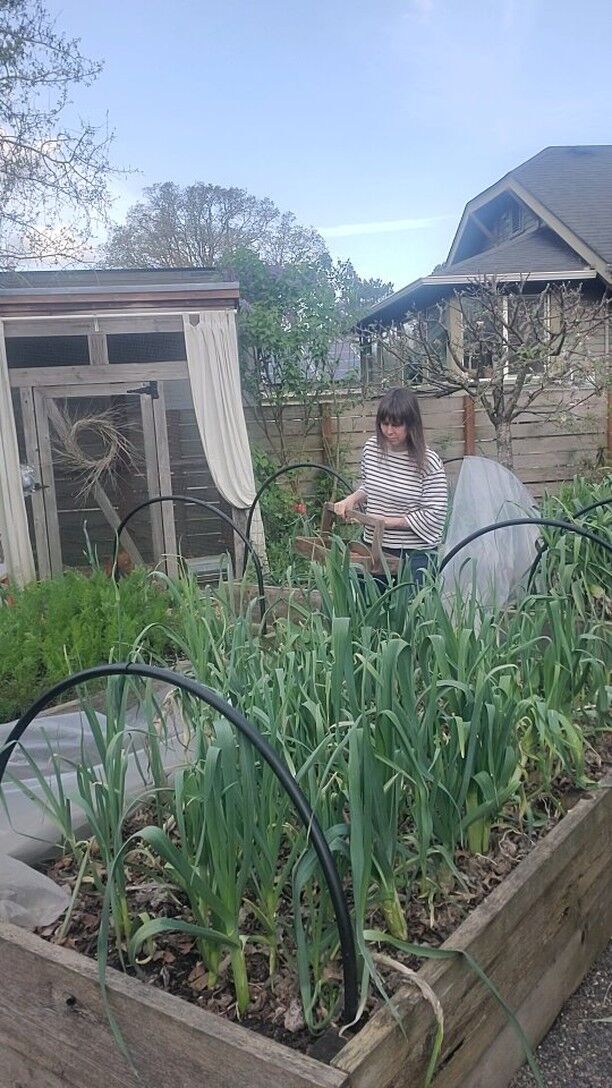

 There's a go
There's a go
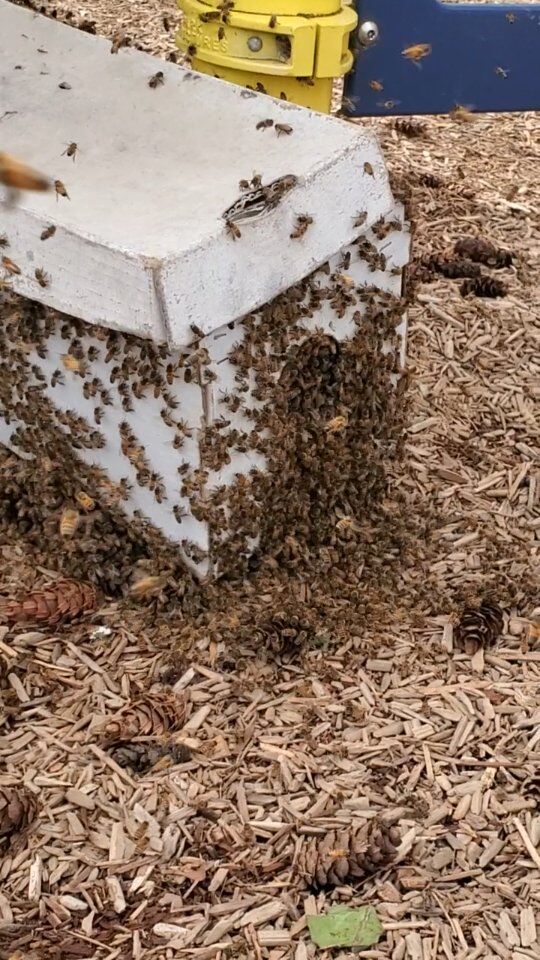
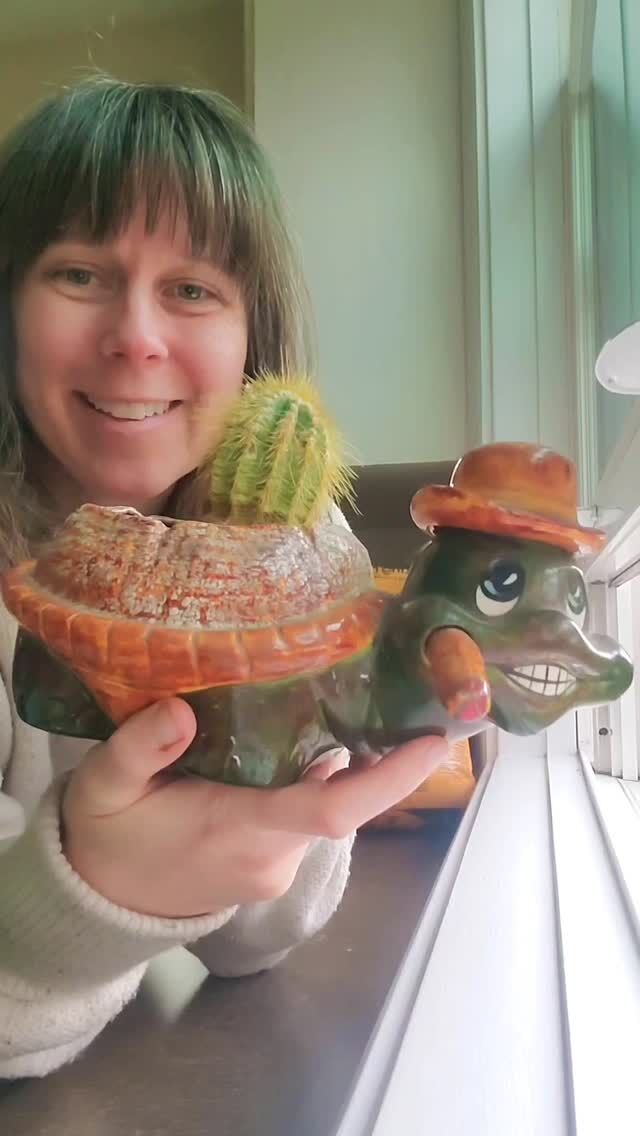
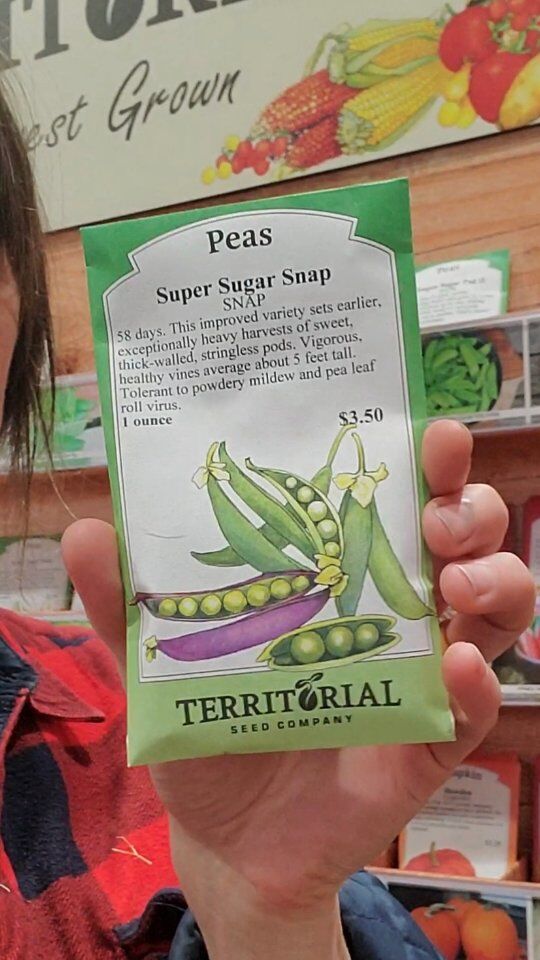
I need to add some nitrogen fixing shrubs. I’ll look into goumi bushes and see if they grow in zone 5.
I’m going to take a little bit of issue with this post….I have a goumi shrub as well and wanted to make this. The instructions are unclear about how long to cook the berry mixture for – the simple syrup is 10-15 minutes but it doesn’t say how long for the berries. Also I think the ratio of berries to water is too high. Unfortunately AFTER I read this I read other recipes on berry syrup which used far less water. I prefer a more concentrated outcome. I do appreciate the separation of simple syrup from the berry mixture so that I can make some low sugar things out of this.
Mmm good
I’ve used this recipe a couple of times, and my problem was finding a use for it as we have our own maple syrup for pancakes, and my husband likes to make hot fudge sauce for ice cream. This year I tried using some old syrup, which had turned to jelly in the freezer, into a topping for cheesecake, mixed with some raspberries or blueberries. Wow! Perfect topping, under a thin ganache.
That’s SO great Mary! I love that you have used this recipe all these years, but found even more use and reported back. Thanks for taking the time to comment and hopefully help others!
I am interested in goumi berries as written about above, but have never heard of them in the U.K. Do you know if they have another name here, and how the Midlands area of England. might compare with your various U.S. planting zones? We have planted a dozen small fruit trees, six cherries among them in the past six years in what had been wild grass area, uncut for a dozen years or more. Needless to say the grass has tried to reclaim the land. We are both in our 80’s, small and iwtyhout a great deal of energy. We have already panted dffoduls between the trees, but I shall no concentrate on putting the rest in rings around teh trees. The trees are still quite smalll so the drip line will no doubt increase in size. Will it be orth the effort to oev the bulbs or just leav eit to their natural inclintion to increase? I am also excited to plant garlic chives under the trees as I can never have enough of those fo rcooking. Will ordinary chives do the same job? I already have pockets of those through my flower beds, mainly for the flowers rather than pest reduction, but glad to know if they do both!
Helen, their botanical name is Elaeagnus multiflora and they are native to China, Korea, and Japan. There is a local nursery near my called One Green World that sells them, and you might learn more about them by visiting their website/emailing them: I think they would grow well in the UK, but you should check first that they do not naturalize or become invasive in your area. I get nervous recommending plants for other countries, since we all know about ones that have become invasive and problematic!
Ordinary chives and garlic chives will likely do the same job under your fruit trees. Both are delicious! For gardeners with limited energy, I think it’s always good to start with the things you will use the most or even simply enjoy the most (like your daffodils). Once those areas feel under control, then you can tackle the next thing you are most excited about on your list. Best wishes!
Just planted my first two Goumi Berrys of the same type in AustinTX this year after I took down a dying tree that was sun blocking. They’re off to a good start! Look forward to next year’s production!